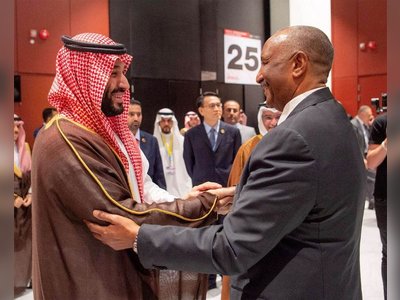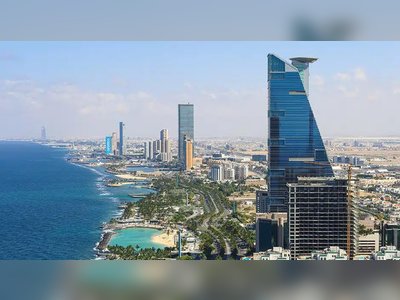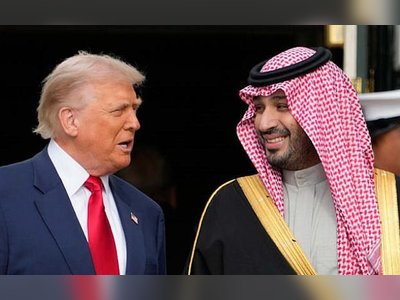Yet another African American man has been murdered by by Los Angeles Police (video)
LAPD Held Down Keenan Anderson, Repeatedly Tased Him - Then Suggested His Death Was His Own Fault
The Los Angeles Police Department is pushing the narrative that Keenan Anderson — a 31-year-old Black teacher, who LAPD cops held down and repeatedly tased as he begged for his life — is responsible for his own death.
Preliminary toxicology tests, performed on Anderson’s body by the police department itself, found traces of cannabinoids and cocaine metabolite in his system – results that in no way mitigate the extreme violence inflicted on Anderson by the police ahead of his January 3 death.
The drug tests were not released as part of an official autopsy; the Los Angeles County coroner’s office is still investigating Anderson’s death and has not yet ruled on its exact medical cause. Instead, the LAPD conducted its own drug tests and announced the results in an unambiguous effort to denigrate and blame its victim, the third man of color killed by the department in the few short weeks of 2023 alone.
There’s nothing surprising about this sort of police practice. The idea that drug possession or use by Black people creates grounds enough to murder by the police officers, has undergirded half a century of U.S. policing.
Cops from the department that murdered George Floyd attempted to blame his death on the fentanyl found present in his system, too, but thankfully without success.
If Anderson’s official autopsy undermines police claims that drugs played a role in his death, it would be a relief, but not a victory. Instead, the very willingness of the LAPD to release its toxicology report speaks to a much broader problem: the certain confidence in the public’s willingness to demonize and blame Black victims. If such racist narratives around drugs weren’t readily available, the police department wouldn’t have bothered releasing the toxicology results at all.
That the LAPD is confidently deploying this public relations tactic nearly three years after Floyd’s death is a grim reflection of how little has changed.
This should come as no surprise, either: The uprisings that followed Floyd’s murder were met with harsh state repression in the streets, aided by disavowals and dismissals across the media and political mainstream. The Democratic lawmakers who knelt ludicrously in kente cloth to signal their anti-racist credentials are the same leaders who have rejected every serious attempt to reckon with the racist violence that defines U.S. policing.
The reality of U.S. policing persists as a continuous, unrepentant, and reform-resistant threat to Black lives.
Calls to defund the police were deemed electorally radioactive, demands to abolish the police derided as delusional, police budgets further swelled, and impunity has continued to reign.
Police killed 1,176 people in 2022 — more killings than in any of the last 10 years. And while racial justice organizers and abolitionists continue to fight, the mass rebellions of 2020 were aggressively drained of political potency by an array of counterinsurgent forces, from mass arrests, media demonization, and, crucially, the complete and cowardly abandonment by liberal politicians on the city, state, and federal levels.
I don’t doubt pollsters’ findings, that voters in 2020 were turned off by the term “defund,” but I’m not interested in relitigating debates around electoral slogans. What matters is that the reality of U.S. policing persists as a continuous, unrepentant, and reform-resistant threat to Black lives.
It should go without saying that the presence of drug traces in Anderson’s blood should in no way shift culpability for his death away from the police. Anderson died following a brutal interaction with police officers he had flagged down to ask for assistance after a traffic collision. Friends and relatives said Anderson was undergoing a mental health crisis — a tragically common circumstance of deaths in police custody.
As released body cam footage showed, Anderson was chased and pinned down in the middle of the street. Two LAPD officers held him down, one with an elbow on his neck, then a knee dug into his back while he was handcuffed, and another cop stood over him with a Taser gun, shooting him with its electric charge — directly in the back — again and again, for a total of over 90 seconds. Anderson was then taken to hospital, where he died around four hours later.
The presence of drugs in Anderson’s system doesn’t even mean that he was high at the time of his interaction with police. Cocaine metabolite can stay in a person’s system for days. More to the point, Anderson certainly didn’t die of a cocaine overdose: These almost exclusively happen while taking the drug, not after hours in a hospital following physical violence and extensive electrocution suffered at the hands of police.
Even as city residents are terrorized, police consume enormous amounts of these communities’ resources. The LAPD received $1.8 billion in city funding last year, 29 times higher than the city’s housing budget, amid a perilous homelessness crisis. Bloated police budgets have not diminished crime but simply expanded the potential for police interactions in which a civilian can be treated as criminal and face violence. Racist police logics maintain a stranglehold over U.S. political norms. Otherwise, it would be — as it should be — beyond doubt that the police are wholly responsible for Keenan Anderson’s death.
Preliminary toxicology tests, performed on Anderson’s body by the police department itself, found traces of cannabinoids and cocaine metabolite in his system – results that in no way mitigate the extreme violence inflicted on Anderson by the police ahead of his January 3 death.
The drug tests were not released as part of an official autopsy; the Los Angeles County coroner’s office is still investigating Anderson’s death and has not yet ruled on its exact medical cause. Instead, the LAPD conducted its own drug tests and announced the results in an unambiguous effort to denigrate and blame its victim, the third man of color killed by the department in the few short weeks of 2023 alone.
There’s nothing surprising about this sort of police practice. The idea that drug possession or use by Black people creates grounds enough to murder by the police officers, has undergirded half a century of U.S. policing.
Cops from the department that murdered George Floyd attempted to blame his death on the fentanyl found present in his system, too, but thankfully without success.
If Anderson’s official autopsy undermines police claims that drugs played a role in his death, it would be a relief, but not a victory. Instead, the very willingness of the LAPD to release its toxicology report speaks to a much broader problem: the certain confidence in the public’s willingness to demonize and blame Black victims. If such racist narratives around drugs weren’t readily available, the police department wouldn’t have bothered releasing the toxicology results at all.
That the LAPD is confidently deploying this public relations tactic nearly three years after Floyd’s death is a grim reflection of how little has changed.
This should come as no surprise, either: The uprisings that followed Floyd’s murder were met with harsh state repression in the streets, aided by disavowals and dismissals across the media and political mainstream. The Democratic lawmakers who knelt ludicrously in kente cloth to signal their anti-racist credentials are the same leaders who have rejected every serious attempt to reckon with the racist violence that defines U.S. policing.
The reality of U.S. policing persists as a continuous, unrepentant, and reform-resistant threat to Black lives.
Calls to defund the police were deemed electorally radioactive, demands to abolish the police derided as delusional, police budgets further swelled, and impunity has continued to reign.
Police killed 1,176 people in 2022 — more killings than in any of the last 10 years. And while racial justice organizers and abolitionists continue to fight, the mass rebellions of 2020 were aggressively drained of political potency by an array of counterinsurgent forces, from mass arrests, media demonization, and, crucially, the complete and cowardly abandonment by liberal politicians on the city, state, and federal levels.
I don’t doubt pollsters’ findings, that voters in 2020 were turned off by the term “defund,” but I’m not interested in relitigating debates around electoral slogans. What matters is that the reality of U.S. policing persists as a continuous, unrepentant, and reform-resistant threat to Black lives.
It should go without saying that the presence of drug traces in Anderson’s blood should in no way shift culpability for his death away from the police. Anderson died following a brutal interaction with police officers he had flagged down to ask for assistance after a traffic collision. Friends and relatives said Anderson was undergoing a mental health crisis — a tragically common circumstance of deaths in police custody.
As released body cam footage showed, Anderson was chased and pinned down in the middle of the street. Two LAPD officers held him down, one with an elbow on his neck, then a knee dug into his back while he was handcuffed, and another cop stood over him with a Taser gun, shooting him with its electric charge — directly in the back — again and again, for a total of over 90 seconds. Anderson was then taken to hospital, where he died around four hours later.
The presence of drugs in Anderson’s system doesn’t even mean that he was high at the time of his interaction with police. Cocaine metabolite can stay in a person’s system for days. More to the point, Anderson certainly didn’t die of a cocaine overdose: These almost exclusively happen while taking the drug, not after hours in a hospital following physical violence and extensive electrocution suffered at the hands of police.
Even as city residents are terrorized, police consume enormous amounts of these communities’ resources. The LAPD received $1.8 billion in city funding last year, 29 times higher than the city’s housing budget, amid a perilous homelessness crisis. Bloated police budgets have not diminished crime but simply expanded the potential for police interactions in which a civilian can be treated as criminal and face violence. Racist police logics maintain a stranglehold over U.S. political norms. Otherwise, it would be — as it should be — beyond doubt that the police are wholly responsible for Keenan Anderson’s death.











